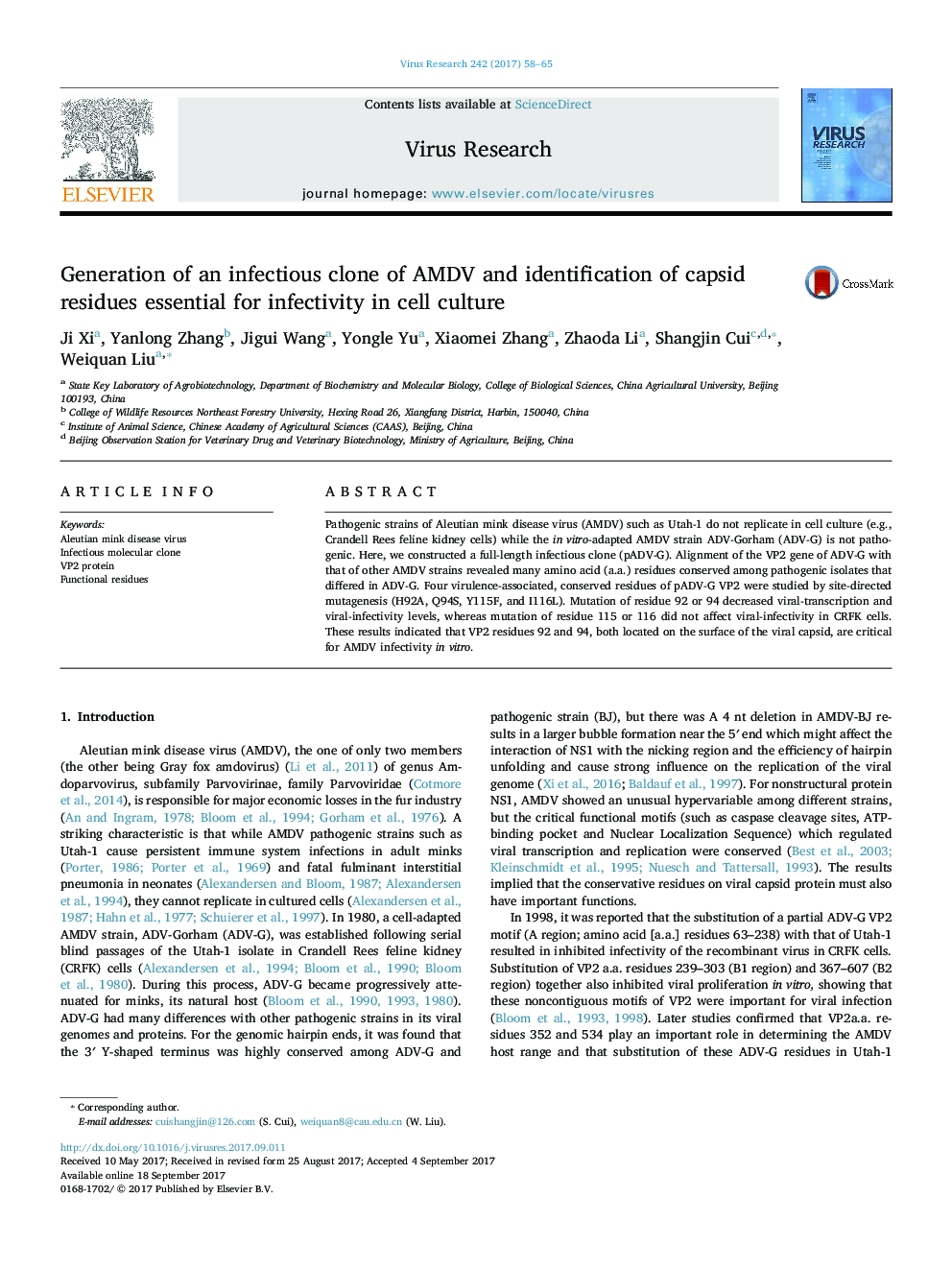| کد مقاله | کد نشریه | سال انتشار | مقاله انگلیسی | نسخه تمام متن |
|---|---|---|---|---|
| 5675265 | 1594315 | 2017 | 8 صفحه PDF | دانلود رایگان |

- Pathogenic strains of AMDV, such as Utah-1, do not replicate in cell culture.
- In this study, we constructed a full-length infectious clone (pADV-G).
- Four virulence-associated residues of pADV-G VP2 were studied by mutagenesis.
- Mutation of H92 or Q94 decreased transcription and replication.
- VP2 residues 92 and 94 are critical for AMDV replication in vitro.
Pathogenic strains of Aleutian mink disease virus (AMDV) such as Utah-1 do not replicate in cell culture (e.g., Crandell Rees feline kidney cells) while the in vitro-adapted AMDV strain ADV-Gorham (ADV-G) is not pathogenic. Here, we constructed a full-length infectious clone (pADV-G). Alignment of the VP2 gene of ADV-G with that of other AMDV strains revealed many amino acid (a.a.) residues conserved among pathogenic isolates that differed in ADV-G. Four virulence-associated, conserved residues of pADV-G VP2 were studied by site-directed mutagenesis (H92A, Q94S, Y115F, and I116L). Mutation of residue 92 or 94 decreased viral-transcription and viral-infectivity levels, whereas mutation of residue 115 or 116 did not affect viral-infectivity in CRFK cells. These results indicated that VP2 residues 92 and 94, both located on the surface of the viral capsid, are critical for AMDV infectivity in vitro.
Journal: Virus Research - Volume 242, 15 October 2017, Pages 58-65